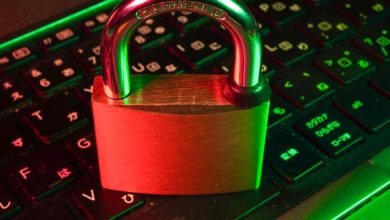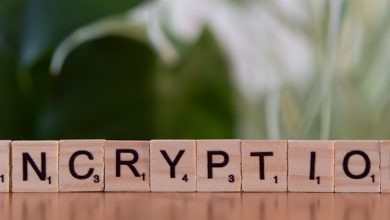The Role of Two-Factor Authentication in Crypto Safety

- Understanding the Basics of Two-Factor Authentication
- Why Two-Factor Authentication is Crucial for Crypto Security
- How Two-Factor Authentication Protects Your Crypto Assets
- Common Mistakes to Avoid When Setting Up Two-Factor Authentication
- The Evolution of Two-Factor Authentication in Crypto
- Tips for Enhancing Your Crypto Security with Two-Factor Authentication
Understanding the Basics of Two-Factor Authentication
Two-factor authentication (2FA) is a security process that requires users to provide two different authentication factors to verify their identity. This adds an extra layer of security to protect sensitive information and prevent unauthorized access. In the context of cryptocurrency safety, 2FA plays a critical role in safeguarding digital assets from cyber threats.
One of the most common forms of 2FA is SMS authentication, where a one-time code is sent to the user’s mobile phone for verification. Another method is using a dedicated authentication app that generates a unique code, such as Google Authenticator or Authy. These codes are time-sensitive and expire quickly, adding an additional level of security.
By requiring two separate pieces of information for authentication, 2FA significantly reduces the risk of unauthorized access to crypto wallets or exchange accounts. Even if a hacker manages to obtain a user’s password, they would still need the second factor to gain entry. This extra step makes it much harder for malicious actors to compromise accounts and steal funds.
It is essential for cryptocurrency users to enable 2FA on all their accounts to enhance security measures. By doing so, they can better protect their investments and minimize the risk of falling victim to cyber attacks. Additionally, regularly updating passwords and keeping authentication apps up to date can further strengthen the security of digital assets.
Why Two-Factor Authentication is Crucial for Crypto Security
Implementing two-factor authentication (2FA) is crucial for enhancing the security of your cryptocurrency holdings. By adding an extra layer of protection beyond just a password, 2FA significantly reduces the risk of unauthorized access to your accounts.
When you enable 2FA, you not only require something you know (like a password) but also something you have (like a mobile device). This means that even if someone obtains your password, they would still need physical access to your 2FA device to gain entry.
With the rising number of hacking incidents targeting cryptocurrency users, using 2FA can provide peace of mind knowing that your assets are better safeguarded. Hackers often rely on phishing scams or malware to steal login credentials, but 2FA acts as a barrier that adds complexity to their malicious activities.
Whether you are a seasoned crypto investor or just starting in the space, 2FA should be considered a non-negotiable security measure. It is a simple yet effective tool that can make a significant difference in protecting your digital assets from cyber threats.
How Two-Factor Authentication Protects Your Crypto Assets
Two-factor authentication (2FA) is a crucial security measure that adds an extra layer of protection to your cryptocurrency assets. By requiring users to provide two forms of identification before accessing their accounts, 2FA significantly reduces the risk of unauthorized access and potential theft of funds.
When you enable 2FA for your crypto accounts, you typically need to provide something you know (like a password) and something you have (like a mobile device) to verify your identity. This means that even if a hacker manages to obtain your password, they would still need access to your second form of identification to gain entry.
One of the most common forms of 2FA for crypto accounts is using a one-time code sent to your mobile device via SMS or generated by an authenticator app. This code is only valid for a short period, adding an additional level of security to your account.
Overall, 2FA is an essential tool in protecting your crypto assets from unauthorized access and potential theft. By implementing this security measure, you can significantly reduce the risk of falling victim to phishing attacks, hacking attempts, and other forms of cybercrime targeting cryptocurrency users.
Common Mistakes to Avoid When Setting Up Two-Factor Authentication
When setting up two-factor authentication for your crypto accounts, there are several common mistakes to avoid to ensure maximum security.
- Using the same authentication method for multiple accounts can increase vulnerability. It is important to diversify the types of authentication used for different platforms.
- Storing backup codes insecurely can pose a risk if they fall into the wrong hands. Make sure to keep them in a secure location, such as a password manager or encrypted file.
- Ignoring software updates for your two-factor authentication apps can leave you exposed to known security vulnerabilities. Always keep your apps up to date.
- Sharing your two-factor authentication codes with others, even if they are trusted individuals, can compromise the security of your accounts. Keep your codes confidential.
- Using easily guessable security questions or answers can make it easier for attackers to bypass two-factor authentication. Choose strong and unique security questions.
By avoiding these common mistakes, you can enhance the security of your crypto assets and minimize the risk of unauthorized access to your accounts.
The Evolution of Two-Factor Authentication in Crypto
In the world of cryptocurrency, the evolution of two-factor authentication (2FA) has played a crucial role in enhancing security measures for digital assets.
Initially, 2FA in crypto involved using a combination of something the user knows (like a password) and something the user has (like a mobile device) to verify their identity. This added layer of security helped protect users from unauthorized access to their accounts.
Over time, the implementation of 2FA in the crypto space has become more sophisticated. Advanced methods, such as biometric authentication and hardware security keys, have been introduced to provide even stronger protection against cyber threats.
The use of 2FA has become standard practice for most cryptocurrency exchanges and wallets, as it significantly reduces the risk of hacking and unauthorized access. By requiring multiple forms of verification, 2FA makes it much harder for malicious actors to compromise user accounts and steal funds.
As the crypto industry continues to evolve, so too will the methods of 2FA. It is essential for crypto users to stay informed about the latest advancements in security technology and always prioritize the protection of their digital assets. By utilizing 2FA and staying vigilant against potential threats, users can ensure the safety of their cryptocurrency holdings.
Tips for Enhancing Your Crypto Security with Two-Factor Authentication
Implementing two-factor authentication (2FA) is a crucial step in enhancing the security of your cryptocurrency holdings. Here are some tips to optimize your 2FA setup:
- Choose a reputable 2FA app such as Google Authenticator or Authy to generate one-time codes for logging into your crypto accounts.
- Enable biometric authentication if your device supports it, adding an extra layer of security.
- Regularly review the devices that have access to your 2FA accounts and remove any that are no longer in use.
- Ensure that your backup codes are stored securely, preferably in a physical location separate from your device.
- Consider using hardware security keys for an additional level of protection against unauthorized access.
By following these tips and staying vigilant about your 2FA settings, you can significantly reduce the risk of unauthorized access to your cryptocurrency assets. Remember, the extra few seconds it takes to authenticate with 2FA is a small price to pay for the peace of mind that your investments are secure.



